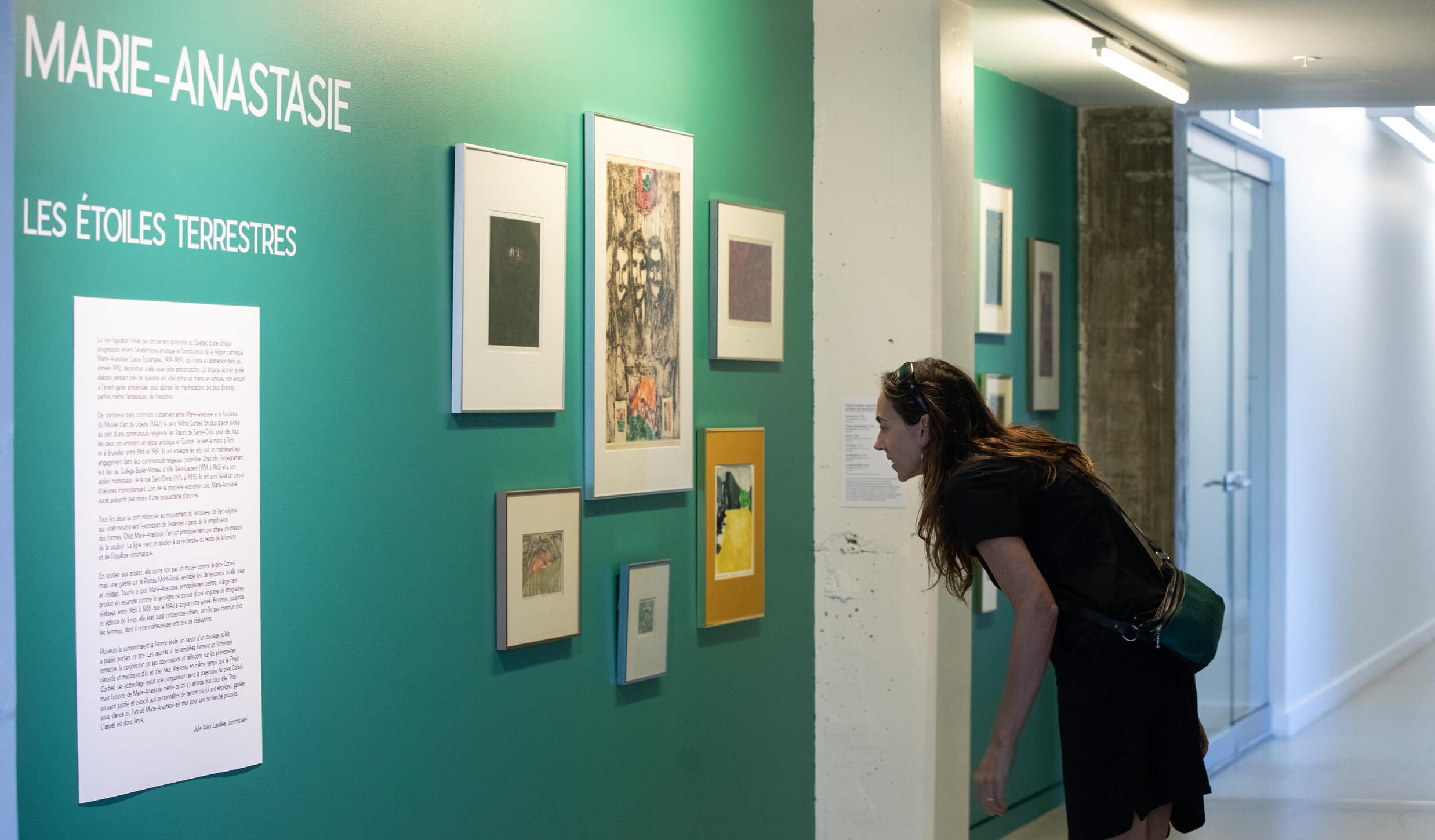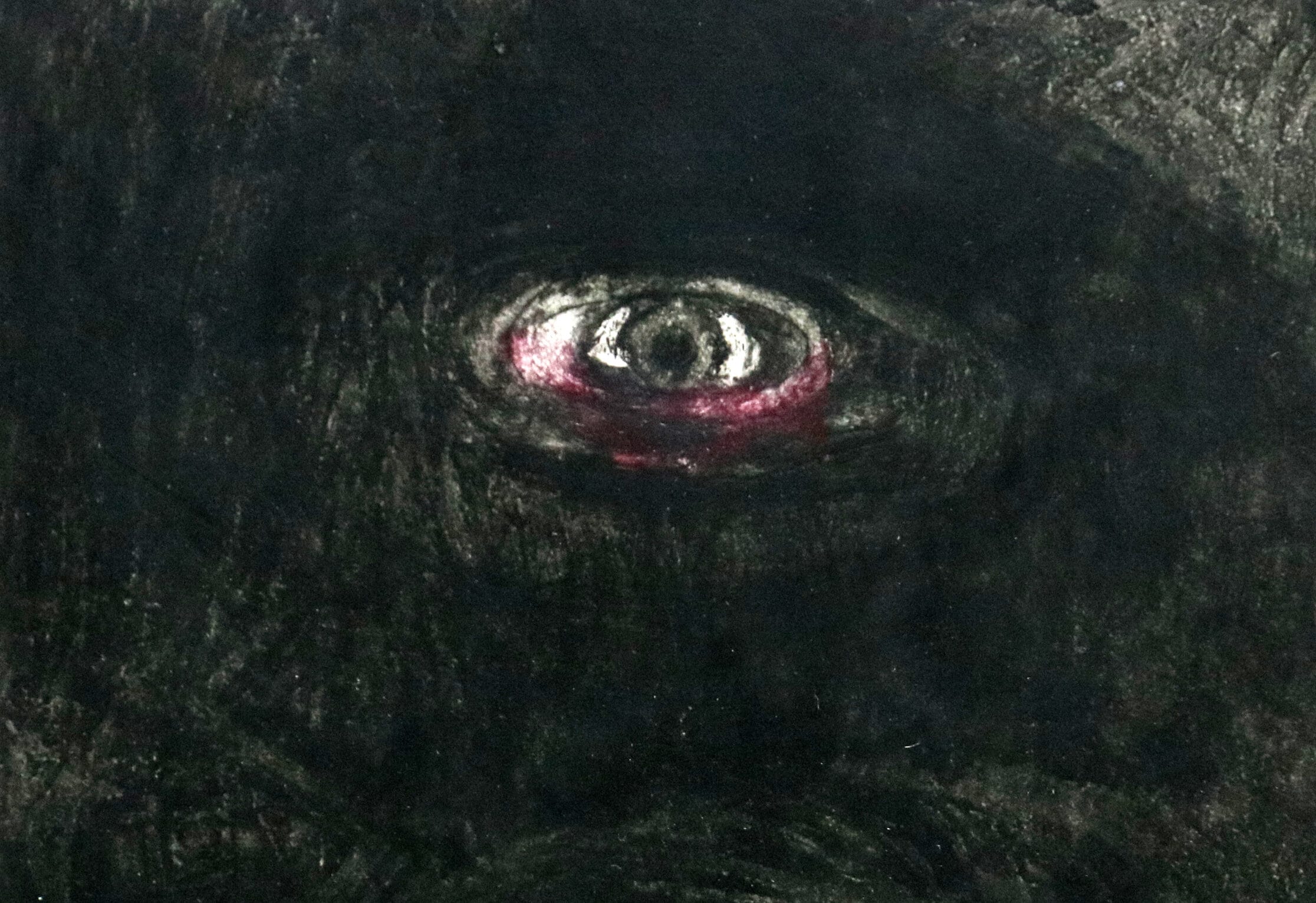About —
In Québec, non-representation was not strictly synonymous with a progressive critique against academic art and the omniscience of Catholicism. Marie‑Anastasie (Laura Tourangeau, 1909‑1989), who produced her first abstract works in the 1950s, singlehandedly deconstructed this preconception. The abstract language she developed over nearly forty years became a vehicle, not exclusive to the anticlerical avant‑garde, for addressing the most diverse, even the most fantastic, manifestations of existence.
Marie-Anastasie and the founder of the Musée d’art de Joliette (MAJ), Father Wilfrid Corbeil, have many traits in common. Besides having lived in a religious community, in her case the Sisters of Holy Cross, they each enjoyed art trips across Europe, hers leading her to Paris and Brussels between 1966 and 1969. Both taught art while remaining involved in their respective communities of faith. In Montréal, Marie‑Anastasie worked at Collège Basile‑Moreau in Ville‑Saint‑Laurent (1954 to 1963), and gave art lessons at her Montréal studio on rue Saint‑Denis (1975 to 1985). They also left behind impressive bodies of work. During her first solo exhibition, Marie‑Anastasie presented no fewer than fifty pieces.
Father Corbeil and Marie-Anastasie believed in renewing the concept of religious art to focus on representing the essential through simplified forms. For Marie‑Anastasie, art primarily consisted of expression through colour. Line became a supporting element in her efforts to render light and achieve chromatic balance.
Unlike Father Corbeil who inaugurated a museum, Marie‑Anastasie supported artists by opening a gallery in the Plateau Mont‑Royal neighbourhood. It became a true meeting point while also providing her with a studio and a place to live. Although she mostly painted, she was multi‑talented and a prolific printmaker, as evidenced in this body of nearly twenty lithographs from between 1966 and 1988, which the MAJ acquired this year. Feminist, sculptor, and publisher, she also designed stained glass—a role almost exclusively held by men—of which few examples remain today.
Many called her la femme étoile— the star woman—after a book of the same name she published. The works on view here form an earthly firmament, a melding of her observations and reflections on the natural and mystical phenomena of Heaven and Earth. Presented concurrently with The Corbeil Project, this exhibition draws comparisons with Father Corbeil’s career, but Marie‑Anastasie’s work deserves attention for its own sake. Too often validated and associated with the renowned artists she studied under, who shall remain nameless here, Marie‑Anastasie’s work is certainly due for a closer examination. Let us heed the call.
Booklet
Biography —
Marie‑Anastasie (Laura Tourangeau 1909‑1989), Sister of the Holy Cross, was a painter, printmaker, poet, gallerist, sculptor, and a publisher of books on art. A graduate of the École des beaux‑arts in 1954, she had her first exhibition in 1958. A grant from Québec’s ministry of cultural affairs allowed her to spend three years in France from 1966 to 1969. In 1975, she opened her own art gallery at 4332 rue Saint‑Denis, where she regularly showed works by little‑known artists that she chose to support. A true community space and living environment, this creative environment attested to her passion and her dedication to Québec’s art scene.
Images in the banner:
Views from the Fall Opening at the Musée d’art de Joliette, 2023. Photo: Ysabelle Latendresse
Marie-Anastasie (Laura Tourangeau), L’œil spatial, 1984. Courtesy of the Sisters of Holy Cross. Photo: © Musée d’art de Joliette





